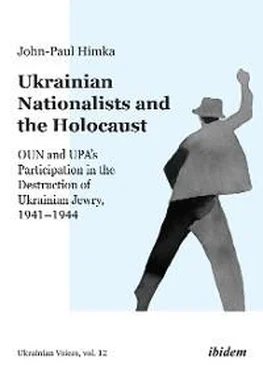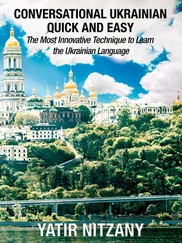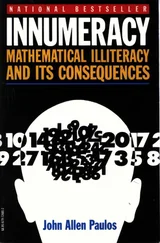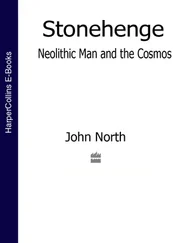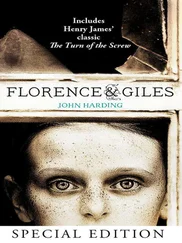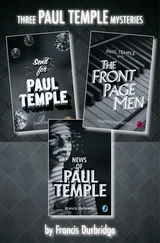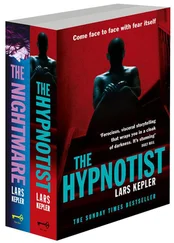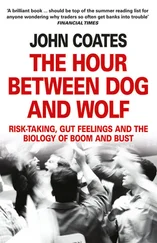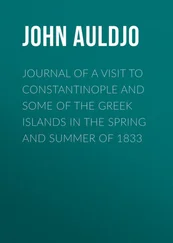1 ...8 9 10 12 13 14 ...29 Moreover, he wrote in a style that had more in common with biblical prophecy than with historical scholarship. Referring to Stella Krenzbach, an alleged Jewish veteran of UPA to whom is attributed a memoir praising the Ukrainian nationalists, 119Prus stated that she acted “undoubtedly from a whisper from Satan, because Satan directed the hand of the genocidaire of Polish and Jewish children,” and that she was guilty of “blaspheming against Yahweh.” 120He also speculated that the apocalypse predicted by St. John the Revelator was not a once and final confrontation between good and evil but would be arriving in installments, one of which was the era of UPA. It was a time “of three clearly apocalyptic figures, as Hitler, Stalin, and [UPA commander Roman] Shukhevych-’Chuprynka,’ and of three hells let loose in the cause of and with the active permission of those who supported them: Nazis, Bolsheviks, and Ukrainian chauvinists.” 121In sum, Prus’s texts are untrustworthy and will not be cited in the narrative that follows. To equate Polishchuk with him is, I feel, a serious error.
A Conceptual Turn: Jan Gross’s Neighbors
The publication of Jan Gross’s short but explosive book Neighbors in 2000-01 122transformed the historiography of the Holocaust as it transpired in Eastern Europe, including in Ukraine. The book described vividly, graphically how Poles in Jedwabne murdered the town’s Jewish inhabitants in July 1941. It generated immense commentary and controversy, but the primary matters of contention (the number of victims and the presence or absence of Germans) have little bearing on how it affected historiography. There were three aspects of Neighbors that were revolutionary, even if they were not without some antecedents. The first was the focus on non-German participation in the extermination of the Jewish population. One might say that this turned the spotlight on the “microbiota” of the world war and the Holocaust, that is, on non-state actors following their own agendas, which sometimes involved the murder of Jews. In particular, Gross directed attention to the anti-Jewish violence of the summer of 1941, shortly after the German invasion of the Soviet Union but before the German leadership made the decision to kill all of European Jewry. One result of Gross’s work was that in the early twenty-first century a large literature on the pogroms and related anti-Jewish violence in Western Ukraine appeared. 123Particularly noteworthy was Kai Struve’s detailed historical account of the violence across Galicia, which brought many new sources to bear and revealed the important role of German actors in the pogroms, especially the soldiers of Waffen-SS Wiking. 124The interest in the pogroms also led to renewed research on one of their contextual factors, the mass murder of thousands of political prisoners by the NKVD, which occurred at different sites in western areas of Ukraine between the launch of the German invasion and the evacuation of Soviet forces. 125
The second way in which Gross’s little volume was revolutionary was that it placed the history of the Holocaust in Eastern Europe firmly within East European studies. Gross was an East Europeanist. Until Neighbors he was best known for two studies of Polish territories under German and Soviet occupation. He knew the languages, historical context, social relations, and culture of Poland before he embarked on his studies of the Holocaust and postwar antisemitism. He had earned his doctorate at Yale in 1975, and his book on Polish society under German occupation appeared four years later. He had behind him a quarter century of publications on Polish sociology and modern history before he published Neighbors . He had not dealt with the Holocaust in his earlier work, and when he finally came to that theme he brought a wealth of training and scholarly experience to it. Until Neighbors , East European studies and Holocaust studies had been on separate tracks. Friedman and Spector were Holocaust specialists; they came from Eastern Europe and so knew the languages and cultures, but their scholarly interests did not extend beyond Jewish history. Armstrong was an East Europeanist, but he avoided dealing with the Holocaust. Hilberg wrote his great work without much knowledge of Eastern Europe and sometimes operated with stereotypes. 126After Neighbors a number of persons trained in East European studies undertook work on the Holocaust. Aside from myself, examples include Kai Struve, who wrote an excellent study of peasant and nation in late nineteenth-century Galicia before he turned to an examination of the pogroms of 1941, and Per Anders Rudling, whose doctoral dissertation concerned the development of Belarusian nationalism but who has also worked on OUN-UPA and the Holocaust. What had occurred as a result of Gross’s intervention was that the Holocaust in Eastern Europe had begun to be treated as a part of East European history. One could no longer just parachute intellectually into an East European locality and follow what the Germans did there—one had to have deeper contextual knowledge. In 1992 Christopher Browning published his pathbreaking study of Holocaust perpetrators, Ordinary Men . It followed a German reserve police battalion as it murdered its way through Poland but did not cite any sources in Polish. No scholar in the West in the 1990s thought this unusual. But when, at the end of the 1990s, Omer Bartov decided to write a history of interethnic relations and the Holocaust in the small Galician town of Buchach, the demands of scholarship were different. The immersion in the languages and cultures and physical space of Galicia required a large investment of time. In the end, it took this prolific author two decades to write his microhistory, Anatomy of a Genocide .
The third revolutionary feature of Gross’s book was that it reintegrated victims’ testimony into mainstream Holocaust scholarship, after decades of marginalization. His particular views on survivors’ testimony will be discussed in the next chapter, on sources, but the overall point is that he demonstrated the crucial importance of moving beyond what perpetrators had to say and listening also to the victims. Christopher Browning exemplifies the change of attitude. When he wrote Ordinary Men back in the early 1990s, he did not use any testimonies or other first-person documents other than those of the perpetrators, except to establish chronology. 127But in the twenty-first century he has become an advocate of reintegrating victim narratives into Holocaust studies. In a lecture he delivered at the USC Shoah Foundation in March 2018, he said:
Using survivor testimony has difficulties....It is problematic evidence. But all historical evidence is problematic in one way or another. Anybody who relies on uncomplicated evidence isn’t going to be able to write history. But the issue is not do we use it, but how do we use it. To not use survivor memories is to lose whole areas of the Holocaust that we have no other set of evidence for. 128
The present monograph comes out of the post- Neighbors consensus: it examines non-German perpetrators, it proceeds from immersion in regional history and culture, and it makes copious use of testimonies and related ego documents. This is now becoming, at least in the West, the main stream of scholarship on the Holocaust in Ukraine and is represented by many, and diverse, practitioners, including Tarik Cyril Amar, Omer Bartov, Delphine Bechtel, Franziska Bruder, Jeffrey Burds, Marco Carynnyk, Simon Geissbühler, Taras Kurylo, Jared McBride, Grzegorz Rossoliński-Liebe, 129Per Anders Rudling, and Kai Struve. Scholars sharing the same consensus have also been studying the Holocaust on territories adjacent to Ukraine, notably Diana Dumitru, Jan Grabowski, and Vladimir Solonari. A few other traits of this scholarly trend need to be mentioned. One is that it is in constant dialogue with Western scholarship on the Holocaust as well as with the historiography on twentieth-century Ukraine—in Western academia, the Ukrainian diaspora, and in Ukraine itself. The main languages of its publications are English and German, but many of its texts have been translated into Ukrainian as well as Polish and Russian. The representatives of this historiographical tendency are critical of both the nationalists and their interpretation of the past.
Читать дальше
